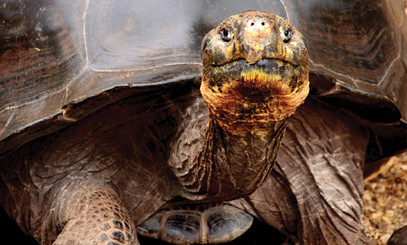
By seaside In Top Stories
-by Monica Reekie -
Feasting my eyes on amazing scenery and architecture, meeting people from all over the world, and sampling their wonderful ethnic food has become a passion of mine. As a photographer, I have truly enjoyed capturing some magical moments in very unique places. When asked about my favourite cities, Saint Petersburg, Istanbul, Vienna, Venice and others all come to mind for different reasons. In 2013, I was given a life-changing opportunity by Lindblad Expeditions/National Geographic. I never dreamed that my heart and soul could be so completely captivated by a group of remote islands 960 kilometers west of the coast of Ecuador along the equator … The Galapagos.
The wild beauty and serenity of this mystical place made me feel like I had gone back in time. The species of birds, mammals and reptiles living there are mostly unique to those islands and have adapted specific characteristics. The 13 species of Darwin’s finches, for example, have evolved according to the environs and food supply of the island in the archipelago on which they live.
The most extraordinary observation was that the wildlife was not afraid of people – though not tame, and we did keep a respectful distance – but the multitude of creatures there seemed oblivious to human presence. We observed the courtship display of the blue-footed boobies and stood within a few feet of nesting birds. In the heat of the day, a flightless cormorant stood over her chicks with her small wings extended, providing shade for her offspring and moving every few seconds as the sun moved across the sky. Bright red-orange Sally Lightfoot crabs walked on the tips of their claws across the black lava rock, and we saw penguins, albatross, great frigatebirds, egrets and more. We had the very special experience of sitting on a beach with 100 or more sea lions and having some of them come close, lie down and have a nap and, when I walked into the water, they came in to play around my legs.
Swimming among playful sea lions, beautiful fish, sea turtles and other creatures; simply walking along a pristine beach with red, white, green or black sand; tiptoeing over lava rock, being careful to avoid the ever-so-docile marine iguanas warming up in the sun; or hiking to the top of a crater for breathtaking views is my idea of paradise. Being face-to-face with a giant tortoise or watching a sea turtle lay her eggs before making her journey back to the ocean and watching rays surfing the waves close to the beach are some amazing memories. There are a few predators here, including the Galapagos hawk, owls and herons, but otherwise it’s an apparent Eden.
Conservation is paramount here and is taken very seriously. Naturalists must accompany all visitors on shore landings, which not only protects the integrity of the area, but give the visitor a wonderful education about this irreplaceable ecosystem and the importance of preserving it for future generations. The unique vegetation varies greatly from island to island, ranging from desert to lush cloud-forest to moorland. The Charles Darwin Research Station is a wonderful place to learn even more about their conservation programs and goals. I am looking forward to returning to paradise in November!
There will be a fundraising trip to the Galapagos in November/December 2014 aboard National Geographic Endeavor with Robert and Birgit Bateman. There are a few spaces remaining! For more information visit https://www.vision2000travel.com/.
 RSS Feed
RSS Feed
